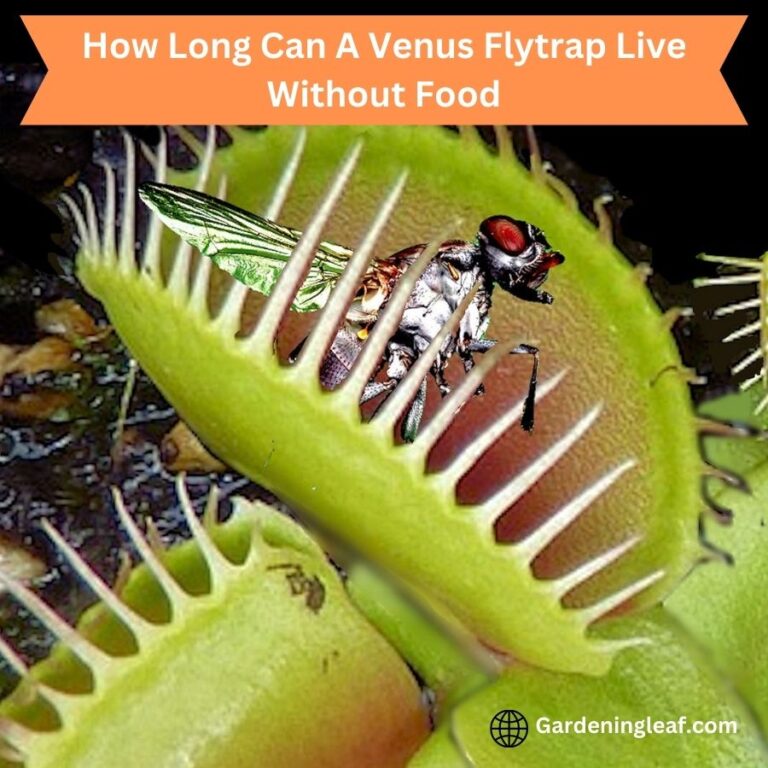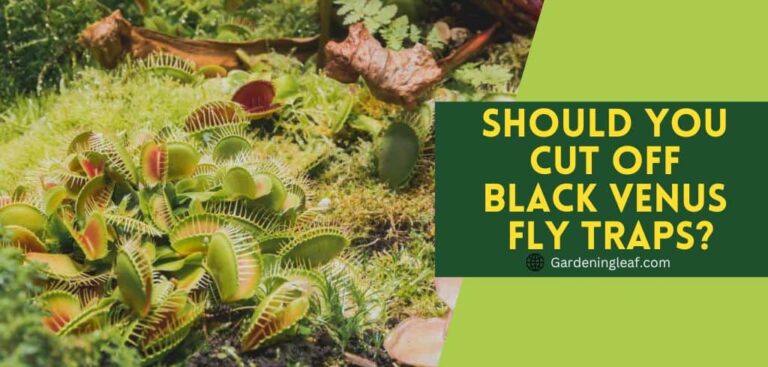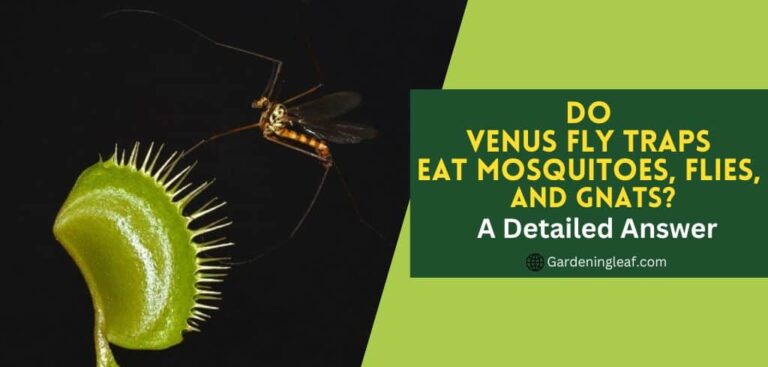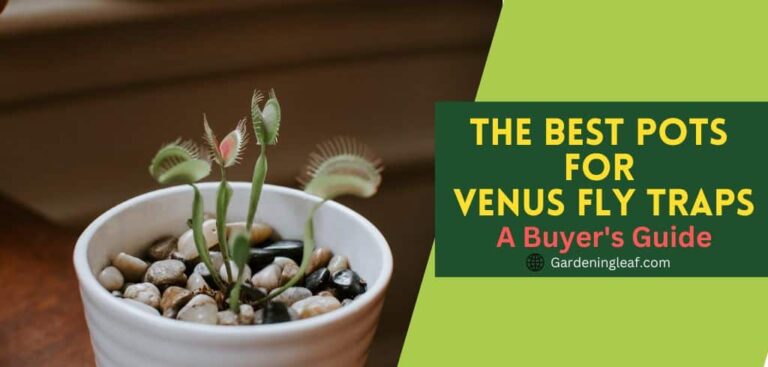How to Grow a Venus Fly Trap from a Seed
More than anything, the Venus fly trap is a symbol of the natural world. It’s one of nature’s most bizarre creatures, growing like in another world. It only takes one glance to see that the plant has a primal edge. To Know how to Grow a Venus fly trap from a seed, and you’ll soon have a new friend in your home or office.
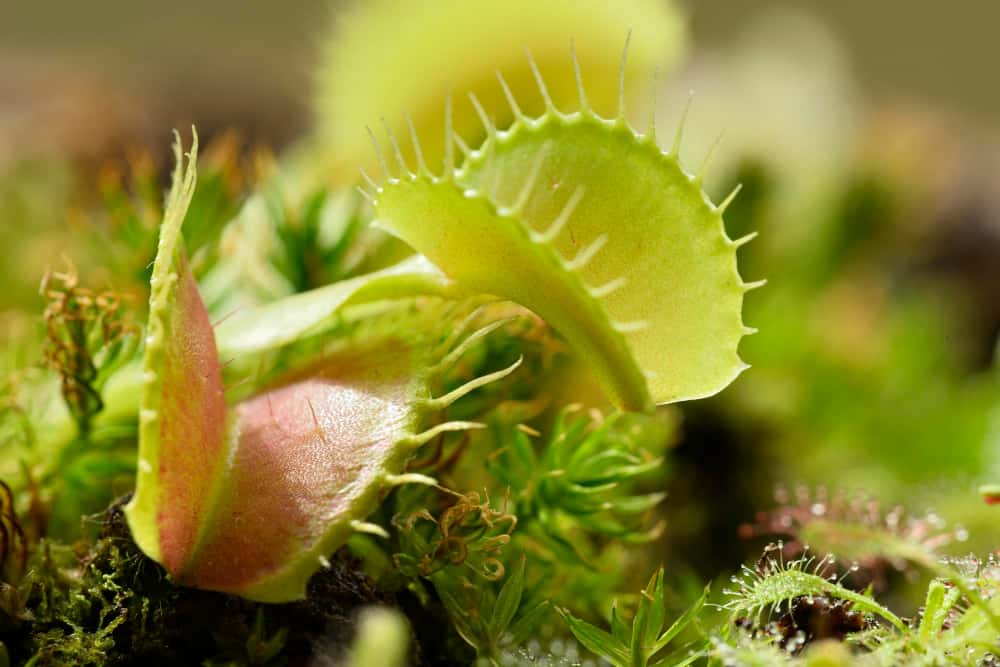
You may effectively grow a venus fly trap from seed by following the steps in this blog post. So, read on if you want to learn how to plant carnivorous plants or buy a Venus fly trap online!
This will help you to have a flytrap of your own and teach you some of the benefits of growing carnivorous plants in your garden.
What is a Venus Fly Trap?
A Venus flytrap is a plant that traps small insects by closing its trap doors. It is a North American native and an associate of the carnivorous plant family. Flytrap plants are easy to grow; you only need water, light, and patience.
Once you have established your flytrap plant in an area with high light levels, water it regularly and be prepared to release the bugs inside! It’s that simple! Once your flytrap plant is grown, display it in a beautiful growing container or place it on your desk – it makes a great plant decoration!
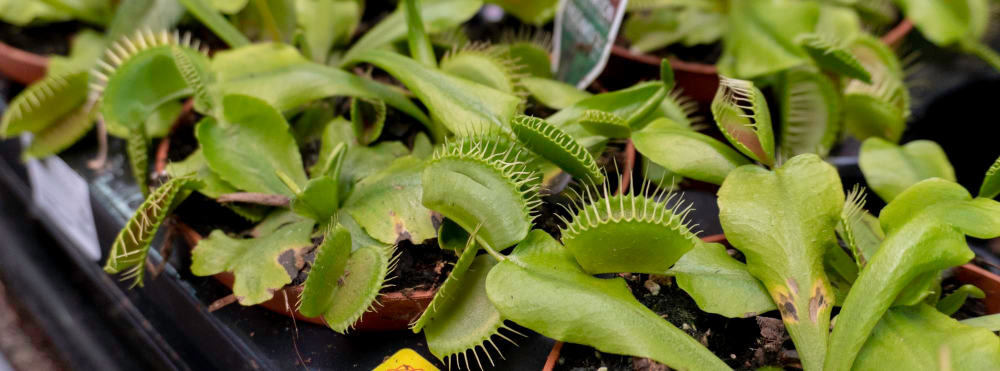
The Benefits of Growing a Venus Fly Trap
Growing a Venus fly trap could be the ultimate fit if you want to add some intriguing and distinctive plants to your home. These plants are simple to grow and may be decorated in any way.
Plus, the trapping mechanism of these plants is unique – they use the juices from fly pupae as food. This makes them a fascinating and fun plant to grow, not to mention nutritious for your home. Also, developing a fly trap can make it easy for children and adults to learn about plant biology and trap fly pupae.
Also read: Should You Cut Off Black Venus Fly Traps?
How to Grow a Venus Fly Trap from a Seed
So, let’s get started! It’s simple to grow Venus flytrap seed. We will direct you on how to grow Venus flytrap seedlings from seed and transplant them into carnivorous plants. Soil once they are big enough. We will also provide tips on watering, sunlight, and germination.
Make Your Own Venus Fly Trap Soil
The soil should be well-drained, with at least 2 inches of depth, to allow water to drain away from roots and leaves. A 1:1 combination of sphagnum peat moss and perlite should be used for the soil. Some people will add horticultural sand instead of perlite, but I prefer perlite.
After filling with soil, add the Venus flytrap seed to the pot and gently press it down into the sphagnum, peat moss, and perlite. Make sure that the seed is covered entirely by the soil mixture.
Place the pot in a warm, dark place and water it regularly until it germinates. Once it starts growing shoots, water it daily until it reaches total growth (6-8 weeks).
Watering
You need to keep your Venus flytrap pot or terrarium moist. Its natural habitat. Make sure the water drains properly from the terrarium. Venus Flytrap needs quality in water. Venus fly traps acquire water from the rain. But You should use distilled or spring water when watering Venus fly traps, as rainwater may contain minerals that damage them.
Tap water can be extreme and unhealthy for a Venus Flytrap plant. In the wild, it tends to have low levels of dissolved salts.
Sunlight
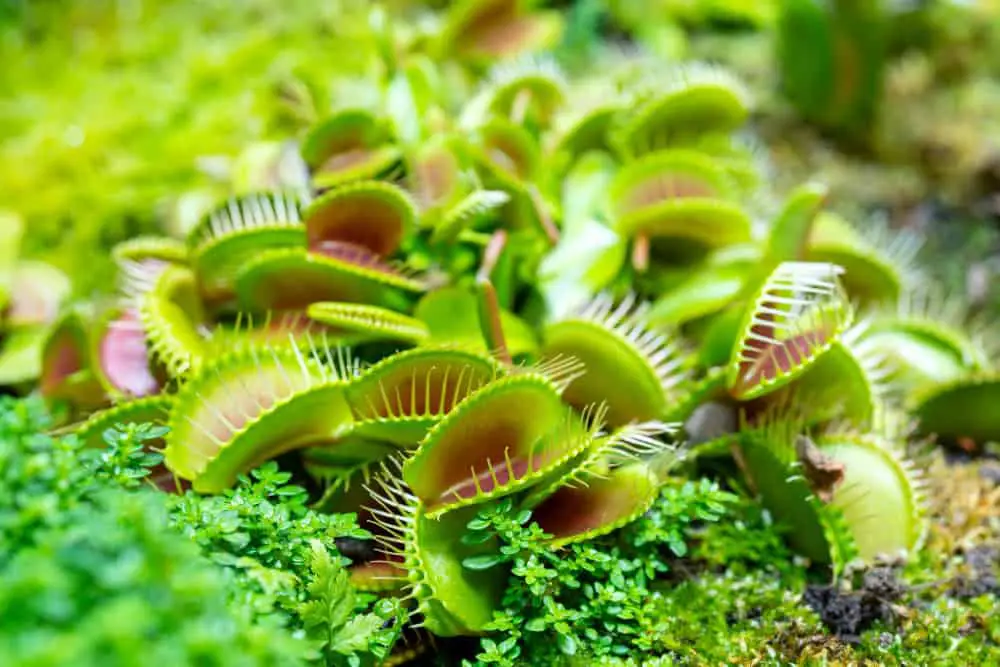
At all times until germination, you must keep them warm and moist. The flytrap needs bright light. Once they reach a height of about two inches, you may experiment with increasing their exposure to natural sunlight by moving them outdoors for part of the day.
Venus Flytraps thrive at 68°F and should not be allowed to fall below 50°F. Venus flytraps hibernate during the winter. Venus fly trap should be maintained at temperatures of 35 to 50°F (2 to 10°C) and receive less sunlight during this time than in summer.
Patience
Enjoy your new plant! Although it takes time to grow, the journey from a seed to its germination to a fly trap may be enjoyable. Be patient – don’t overwater it; the flytrap will have a better possibility of survival in the winter. Once your flytrap grows, please give it some higher humidity (by spraying water on the leaves) to help increase its chances of survival during cold months. It takes 6 months for the seed to germinate into full-grown plants, but exceptions do happen.
Also read: How to Clear an Overgrown Garden Fast
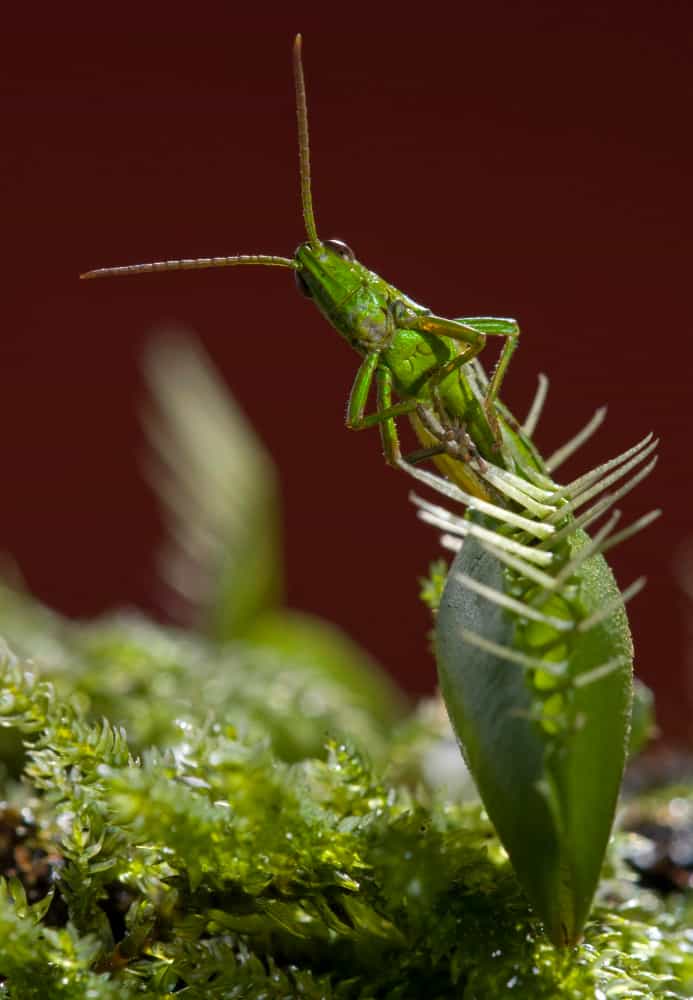
Feeding a Venus Flytrap
Leave the Venus flytrap to capture its meals (unless your outdoor environment is excessively sterile). The Venus flytrap will trap spiders and other organisms if you keep it outside. When you notice the leaves clutched together, the Venus flytrap has captured something.
Feed mealworms or other insects to the Venus flytrap if needed. Live insects are best for Venus flytraps.
Please don’t give it meat to eat. Although you might be tempted to feed the Venus flytrap some ham or chicken, the plant lacks the necessary enzymes to break down animal protein. It might rot and die if you give it anything other than spiders or insects to eat.
Read More:- How Long Can A Venus Flytrap Live Without Food
When to Repot a Venus Fly Trap?
When the container barely holds the root ball of a Venus flytrap, it’s time to repot the plant. This is usually about two years after planting. At this time, the plant will be filled out and grow its first pair of leaves.
When repotting, it’s essential to do so carefully, as the plant’s roots are delicate and easily get damaged. First, remove the plant from its pot and put it in a water basin. This will enable you to clean the roots of any leftover dirt without harming them.
Keep your new Venus flytrap well-lit and in water; it should generally grow again within a few weeks. Next, remove the plant from the bowl and repot it to its new pot. Ensure the new pot’s soil is well-drained, as flytraps are sensitive to excess moisture.
How Often to Water a Venus Fly Trap?
Venus flytrap plants, like other plants, need moisture for development and flowering. It’s best to water a Venus flytrap every few days, but on arid days, you can water it once or twice. If your flytrap is constantly moist, the soil will be heavy and difficult to move around, so try watering less often. Most flytrap plants can survive on a drier or average amount of water, so there is no need to overwater them. Instead, check the soil often for dry patches and water them as needed to moisten the entire root system.
How Deep to Plant a Venus Fly Trap?
A typical plant will reach about 12 inches tall and 8 inches wide after growing in a deep potting mix for two years.
How to Propagate a Venus Fly Trap?

It’s easy to propagate a Venus fly trap by division, seed, or leaf cuttings.
The division is the process of propagating plants by separating them from existing mother plants into individual units.
Seed propagation is the process of producing new plants from the flower seed.
Leaf-cutting propagation is the process of propagating new plants from parts of a plant that are ready to grow independently, such as the leaves and roots.
Will my Venus Fly Trap survive if it’s not in direct sunlight?
Yes, your Venus Flytrap will still grow and thrive even if it’s not in direct sunlight. You can place the trap near a windowsill or artificial light source for extra sunlight, but provide warmth and moisture so the traps can develop fully.
What are the ideal conditions for growing a Venus Fly Trap?
1. Place your fly trap in direct sunlight, but avoid exposure to rain or water droplets directly on top of the traps.
2. Ensure you evenly distribute the soil around the fly trap’s root area, which will help it grow properly.
3. You need a moist environment to plant the fly trap.
Can I grow this type of plant indoors or outdoors?
The Venus fly trap is simple to develop both indoors and outdoors. It prefers well-drained soil and direct sunlight over partial shade. It can also be grown in a pot or plastic bag. Once established, this plant requires little care. The only maintenance required is occasional watering when the soil begins to dry.
How do I know if my Venus fly trap is ready to eat?
When your Venus flytrap is ready to eat, the leaves will be at their maximum size. They will be bright green and have no brown or dry spots on them. The traps should also be whole and healthy, with no holes or tears. The trap is fully closed, with no gap between the two halves. It’s ready for action!
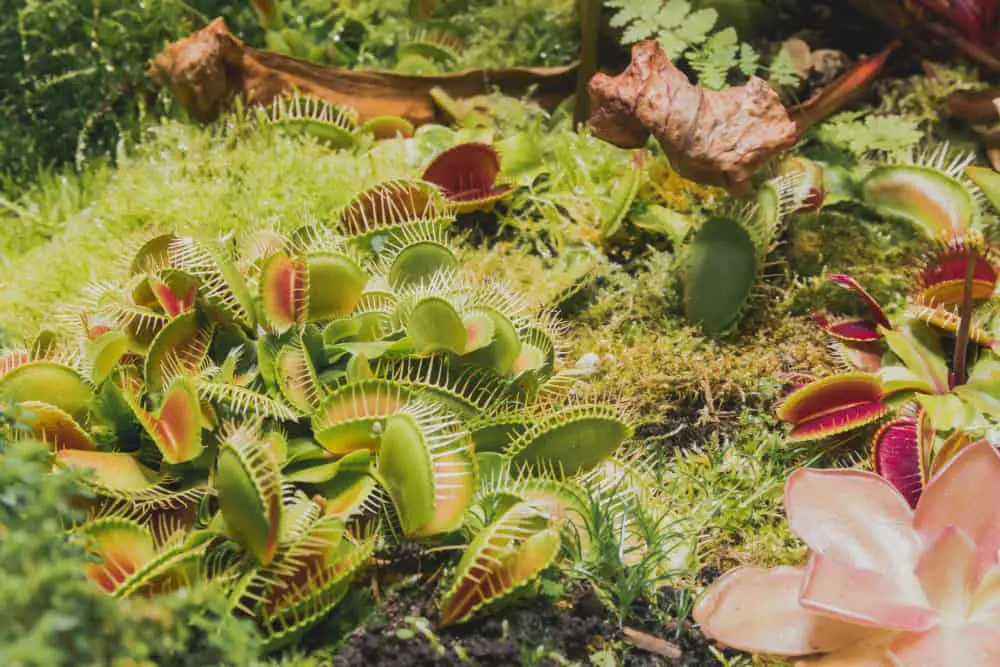
How long can Venus fly traps live without eating flies?
Most of the time, Venus flytraps can survive without insects since they do not require the nutrients obtained by insect digestion. They take CO2 from the atmosphere, photosynthesize using sunshine, and get water and trace nutrients from the soil surrounding their roots. The insects provide only an added “kick.”
The Venus flytrap is one of the few plants that can digest animal tissue, but it does not need to: it gets all its nutrients from the rainwater and soil. In areas with constant rainfall, some may have grown large enough to spread their root systems out over a wide area and take in water and nutrients more efficiently.
It can go for well over a year without eating anything: an experiment in 2004 showed that a plant that was 17 years old survived for more than 11 months without any food.
How long does growing a Venus fly trap from a seed take?
A Venus Fly Trap can take a few weeks to several months to grow from a seed to a fully grown plant. However, the speed at which your Venus Fly Trap grows will largely depend on how well you care for it and provide it with the proper environment. Follow the plant’s watering and fertilizing instructions carefully, and don’t be afraid to adjust them as necessary. You can also try growing Venus Fly Traps in pots if you want them to grow faster.
Conclusion
We’ll provide all the details, and you will understand how to grow a venus fly trap from a seed – the easy way. You’re guaranteed a successful planting experience following the growing tips and instructions! So, don’t wait any longer and start growing your Venus Fly Trap today!
Source :- https://en.wikipedia.org/wiki/Venus_flytrap https://www.britannica.com/plant/pitcher-plant

